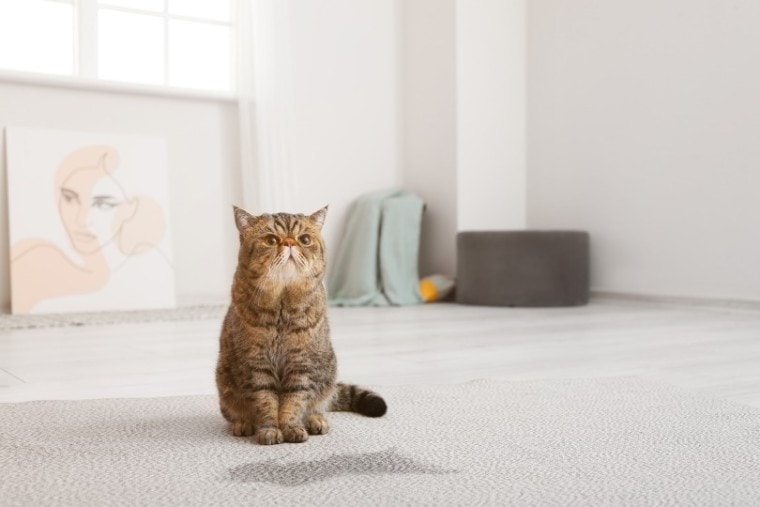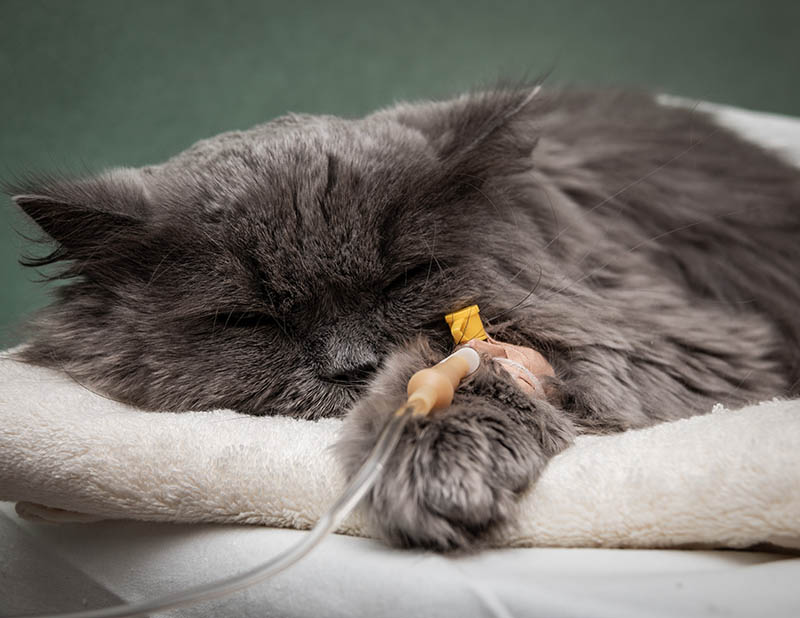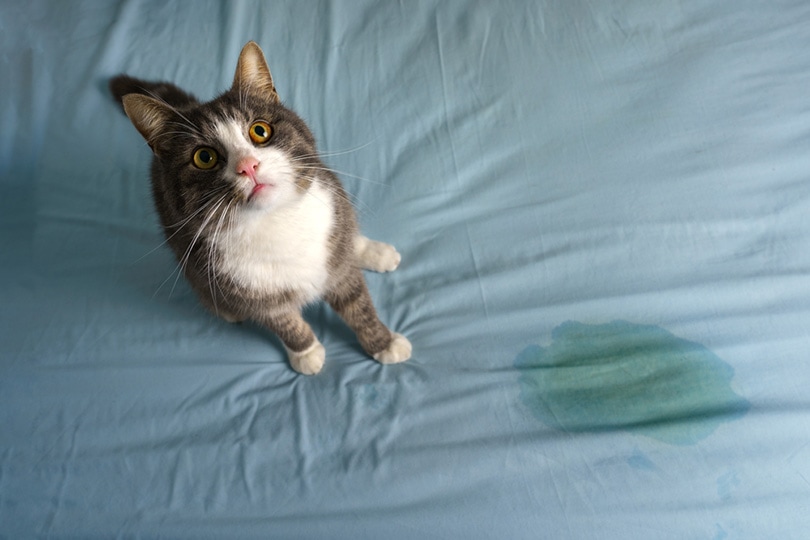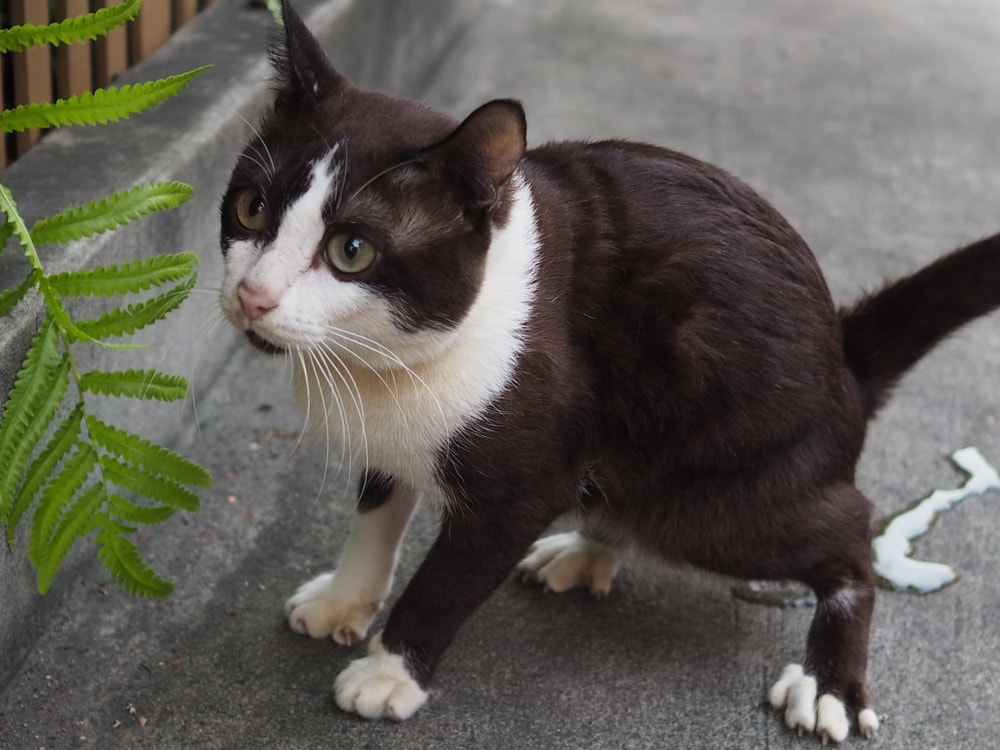
Having your cat pee all over the house is frustrating. Not only do you have a big mess to clean up, but you’re worried about why their behavior has changed so suddenly. We have seven possible explanations for you, whether it’s a medical problem, their litter box, stress, or something else.
Whatever the cause, it’s essential to get to the root of it quickly so that it can be treated and resolved as soon as possible. Some medical conditions can be life-threatening, while some behaviors can be more challenging to correct the longer they are allowed to continue. Long-term stress can lead to medical conditions later.
The 7 Reasons Your Cat is Peeing Everywhere All of a Sudden
1. Medical Problems
If your cat is urinating outside of the litter box and this is new behavior for them, it’s essential that you first rule out any medical cause. Common illnesses like a urinary tract infection (UTI), an inflammatory disease, kidney stones, or diabetes can all result in abnormal toileting behavior. Make an appointment with your pet’s veterinarian as soon as possible.
Medical conditions like diabetes and kidney disease may cause increased thirst and urination. Your cat may be unable to make it to its litter box in time. If they are peeing so much that their litter box is full quickly, they may no longer want to use it. A UTI will cause a sense of urgency to pee. Cats in pain may or may not vocalize that as they urinate but may be telling you something is wrong by their sudden change in behavior.

2. Litter Box Issues
Once you’ve ruled out any pressing medical issues causing their strange behavior, you can look to other causes. The most common reasons cats pee outside their litter box are issues with the box itself. Cats can be very picky about things, but they are probably the pickiest about their litter boxes!
Take stock of the current litter box setup to pinpoint this as the cause of their peeing around the house. Multi-cat households should have several litter boxes, at least one per cat, then one extra and they should be located in quiet and private areas. Make sure to clean deposits out at least daily.
Often, the box is not big enough for your cat, especially if it’s the same one they used as a kitten. Some cats prefer an open litter box and others are happier with an enclosed one. The type of litter also matters because cats may not like the texture or scent.
3. Territorial Marking
Cats are territorial creatures and are prone to marking. Every time they bump their head or slide their flanks against a person or object, they leave their scent and mark it as theirs. Even scratching leaves a territorial scent. Unfortunately, urine-marking can become a messy and stinky habit that is hard to break.
Urine-marking inside the home is often caused by suddenly sharing their space with a new pet or person, as mating behavior in unneutered male cats, or as a stress response. Urinating and urine-marking are very different and require different solutions. Typically, urinating is done on a horizontal surface while squatting and leaves a large puddle, while marking is done on vertical surfaces with just enough to leave their scent.
Once you’ve diagnosed the behavior as marking and not peeing, you can address the reason behind it, but it will take patience.
Our favorite enzyme cleaner is the Hepper Advanced Bio-Enzyme Pet Stain & Odor Eliminator Spray because it permanently removes even the very worst pet stains and smells you can imagine (and makes clean-up a breeze). They even offer a 100% satisfaction guarantee! Click here to order a bottle and freshen up your home today.
- ADVANCED ENZYMATIC CLEANER - Penetrates the most stubborn smells and stains at the deepest molecular...
- FOR ANY MESS, ON ANY SURFACE - This pet odor eliminator cleans your carpets, floors, furniture,...
- FRESH, NATURAL ODOR - Our unique formulation doesn't rely on dangerous or unpleasant chemical...
At Pet Keen, we’ve admired Hepper for many years, and decided to take a controlling ownership interest so that we could benefit from the outstanding products of this cool cat company!

4. Re-marking
Returning to mark the same location again is common with cats. The pheromones in the urine mark the spot as theirs, and they will come back to it again if drawn or allowed to. Continued cat spraying can be discouraged by cleaning the area quickly and thoroughly with an enzyme-based cleanser that breaks down the proteins in urine to eradicate the scent. You should then make the site inaccessible, if possible.
If your pet pees on items new to the home, like guests’ belongings or things you’ve just bought at the store, keep a closet designated for them so the cat can’t reach them. Continued marking near doors may be due to animals outside the home. Creating deterrents for stray or neighborhood cats may help alleviate the behavior.
5. Routine Changes
Cats are creatures of habit, as they say, and rarely welcome changes in their routine. Anything that disrupts the usual rhythm of their day could cause stress. The scent of their urine is calming because it reassures them that they are in their own safe space. Therefore, they are more likely to urinate in areas outside their litter box to surround themselves with it.
Although some changes in routine are unavoidable, such as a change in your schedule at work, there are some things you can do to help your cat transition. If the difference is drastic, try to work out a way to transition slowly, and remember to turn to your vet for guidance if needed. Synthetic calming pheromones may be beneficial during the change.

6. Environment Changes
Even moving their litter box could cause some cats stress, especially an older cat who is set in their ways. Introducing a new pet or person to the home could be traumatic for them and trigger a stress response that causes them to urinate outside of their litter box.
Depending on the environment change, you’ll want to plan ahead. If introducing a new pet, it’s best to keep the animals separated by a door for several days so your cat can adjust slowly. If there will be a new person, have them visit for short periods at first, and gradually increase the lengths and frequency of the visits. Moving furniture around can also be done slowly by removing, adding, or changing one piece daily until the change is complete.
7. Age
Cats experience many of the same effects of time that humans do. Joint stiffness and arthritis can make a once agile pet seem slow to get up from a nap or less likely to jump from the back of the couch to the floor. These changes may make it more difficult for your elderly cat to get to their litter box in time.
Older cats may change litter box behavior due to a natural cognitive decline or sensory function. While these symptoms are a little harder to diagnose, your pet may not realize they have to go until they don’t have time to get there, or they may forget where the litter box is located.
If you have an older pet and other possible reasons for their abnormal behavior have been ruled out, it could simply be their age.

Conclusion
Finding why your cat is peeing around your home might take time, but it’s the first step to resolving the problem. Then, you can focus on getting them medical treatment, making changes around your home, or supporting your cat with pheromones or other vet-recommended therapies to reduce stress. Remember that sudden behavioral changes often indicate something is wrong, and the same goes for litter box habits.
Related Read:
- Why Did My Cat Pee on Me While I Was Sleeping? 6 Possible Reasons
- Covered vs Uncovered Litter Boxes: Does My Cat Care?
Featured Image Credit: Pixel Shot, Shutterstock








